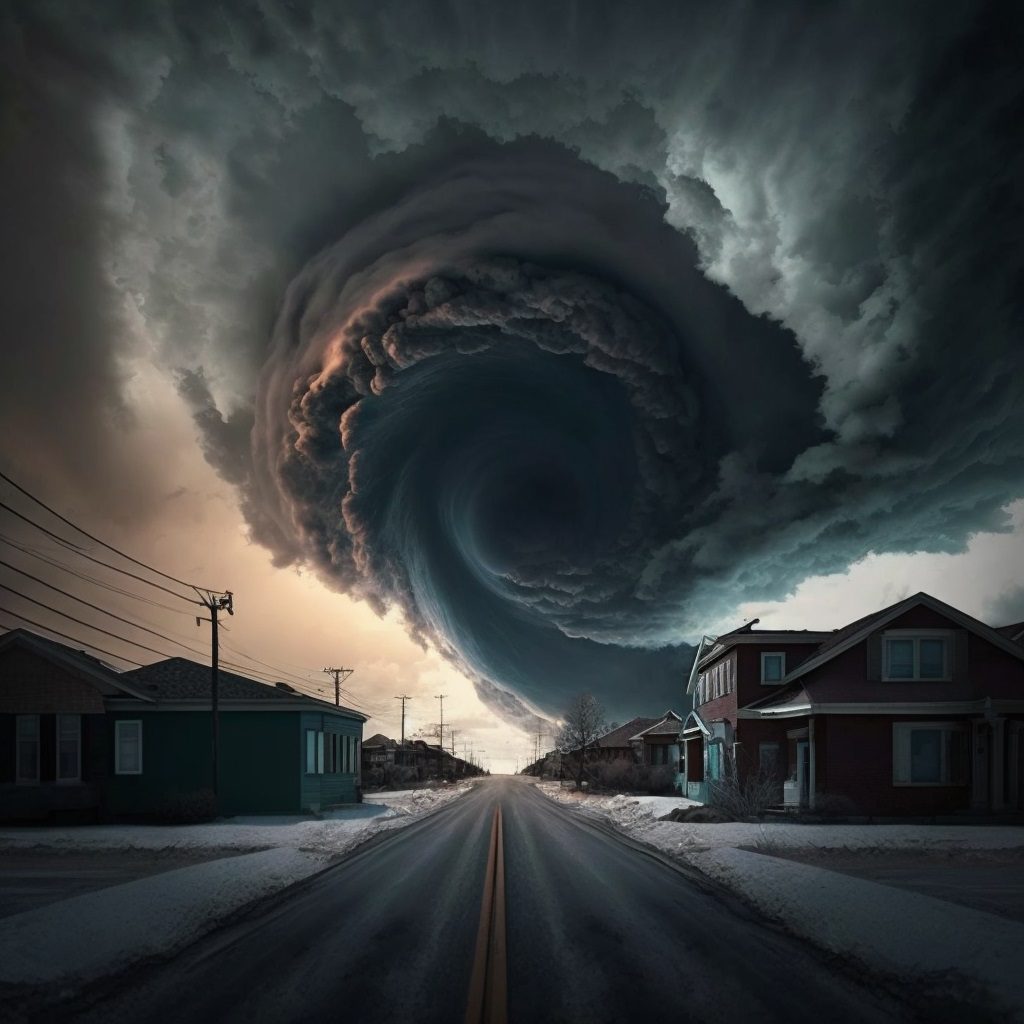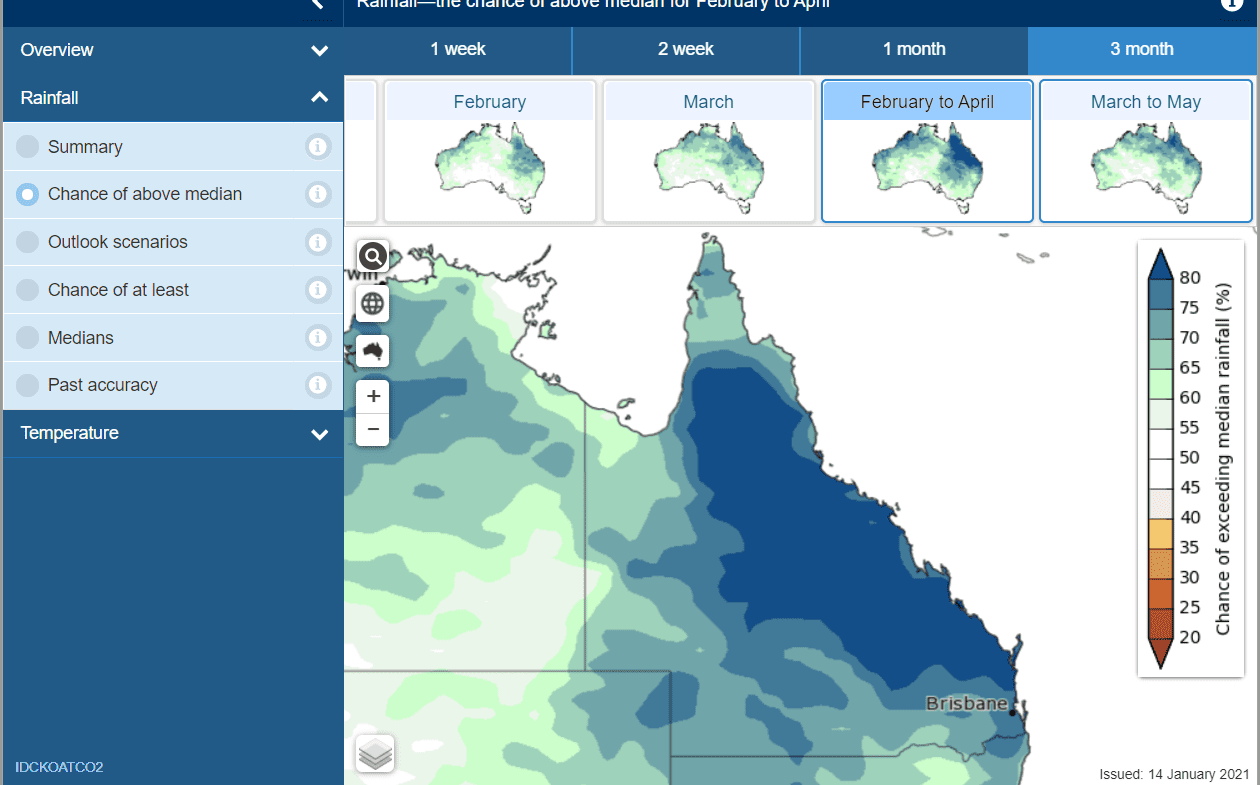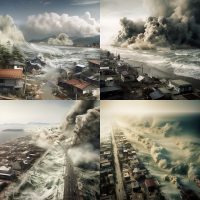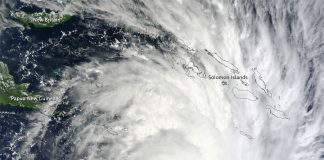
Unleashed Fury: Captured Footage of the Most Extreme Weather Events!
In recent times, severe weather conditions have been more commonplace and have drawn the attention of both those who appreciate nature and climate experts.
As human-induced climate change continues to alter our planet’s atmosphere, these fascinating yet dangerous phenomena are expected to occur more frequently. This blog post will explore the wonders and perils of extreme weather events as documented in recent years.
We’ll explore extreme sea phenomena such as toxic froth in Cappuccino Seas caused by untreated sewage and gigantic waves during Typhoon Chan Hom and Storm Gloria. Additionally, we’ll examine unusual atmospheric events like uplit lightning originating from tall structures, dust storms creating walls of orange clouds in Chile, and Hurricane Ida’s Rail Rain flooding New York City subways.
Furthermore, we’ll discuss dangerous ice encounters, including frozen Lake Michigan lighthouses coated with thick layers of ice, mammoth-sized ice shoves inching towards homes, and under-ice tidal waves resulting from collapsing glaciers.
Finally, we will investigate terrifying tornadoes & twisters along with tidal bores & river surges that showcase the power behind extreme weather events on Earth.
Extreme Sea Phenomena
The power of nature is truly awe-inspiring, and nothing showcases this more than extreme sea phenomena. From toxic froth in Cappuccino Seas to gigantic waves during Typhoon Chan Hom and Mediterranean Storm Gloria, these events remind us of the immense force our oceans possess.
Toxic Froth in Cappuccino Seas Caused by Untreated Sewage
In recent years, a disturbing phenomenon known as Cappuccino Seas has been observed along coastlines around the world. Untreated sewage has been identified as the source of the toxic froth that accumulates in the Cappuccino Seas, posing a risk to both marine life and people.
The foam created by Cappuccino Seas can be hazardous to both aquatic creatures and people who come into contact with it. Efforts are being made to reduce pollution levels and prevent further occurrences of this alarming event.
Gigantic Waves During Typhoon Chan Hom and Storm Gloria
Mother Nature’s fury is often displayed through powerful storms that generate enormous waves capable of wreaking havoc on coastal communities.
In 2015, Typhoon Chan Hom produced colossal waves that battered China’s eastern coastline before making landfall near Shanghai. Similarly, in January 2023, Mediterranean storm Gloria generated massive swells which caused widespread damage across Spain’s eastern coast.
- Typhoon Chan Hom: With wind speeds reaching up to 130 mph (209 km/h), Typhoon Chan Hom was one of the strongest typhoons ever recorded in China at its peak intensity.
- Storm Gloria: This powerful Mediterranean storm caused widespread flooding, heavy snowfall, and strong winds across Spain. The death toll from the storm reached 13 people.
In both cases, these extreme sea phenomena serve as a stark reminder of the immense power our oceans hold and the importance of being prepared for such events to minimize their impact on human lives and property. Extreme weather events like these are becoming more frequent due to climate change and human-induced global warming.
Climate scientists warn that higher temperatures caused by human activities are altering the jet stream, leading to more extreme weather events like hurricanes Harvey and Maria. It is crucial that we take action to reduce our carbon footprint and mitigate the effects of climate change before it’s too late.
The extreme sea phenomena are a testament to the power of nature and its unpredictability. Unusual atmospheric events can also cause havoc, with dust storms, lightning strikes and hurricane rains all having the potential to wreak destruction on cities across the globe.
Unusual Atmospheric Events
Atmospheric events can be just as unpredictable and wild as the ocean’s most extreme weather. Discover uplit lightning striking from tall structures, walls of orange clouds from dust storms in Chile, and Hurricane Ida’s Rail Rain that overwhelmed New York City’s sewage system.
Uplit Lightning Originating From Tall Structures
In a fascinating display of nature’s power, uplit lightning occurs when electrical discharges shoot upwards from tall structures like skyscrapers or communication towers. This rare phenomenon is typically caused by positive charges accumulating at the top of these buildings during thunderstorms. To witness this electrifying event in action, check out this video footage captured during a storm in Chicago.
Dust Storms Creating Walls Of Orange Clouds In Chile
Dust storms in Chile have been known to create awe-inspiring walls of orange clouds that stretch for miles across the landscape. These intense meteorological events occur due to strong winds picking up loose soil particles and carrying them through the air. The result is an incredible visual spectacle that also poses risks such as reduced visibility and respiratory issues for those caught within its path.
Hurricane Ida’s Rail Rain Flooding New York City Subways
New Yorkers experienced an unprecedented deluge when Hurricane Ida brought torrential rainfall to their city on September 1st, 2023. The ‘Rail Rain’ event brought a massive downpour to the Big Apple, causing significant flooding in its subway system and disrupting transportation services for commuters. The sheer volume of water overwhelmed the city’s sewage infrastructure, highlighting the need for improved flood resilience measures in urban areas.
The unusual atmospheric events discussed in this article are both awe-inspiring and dangerous, making them an important part of the extreme weather we experience. Moving on to another kind of extreme weather event, let’s take a look at dangerous ice encounters.
Dangerous Ice Encounters
Ice can create some truly breathtaking but perilous situations. This section will explore Lake Michigan lighthouses encased in ice due to freezing waters. Massive ice shoves creeping towards homes, and heart-stopping under-ice tidal waves are caused by collapsing glaciers.
Frozen Lake Michigan Lighthouses Coated with Thick Layers of Ice
The frigid temperatures and fierce winds that often sweep across Lake Michigan during winter months can result in a stunning yet dangerous phenomenon: lighthouses coated with thick layers of ice. When the lake’s water is whipped into the air by strong gusts, it freezes upon contact with these structures, creating an otherworldly scene straight out of a fantasy novel. However beautiful they may appear, these icy conditions pose significant risks for both people venturing too close and ships navigating treacherous waters.
Mammoth-Sized Ice Shoves Inching Towards Homes
Ice shoves, also known as ivu or shoreline ice pileup events, are another awe-inspiring yet potentially hazardous occurrence resulting from extreme weather conditions. These mammoth-sized piles of ice form when strong winds push floating sheets against shorelines, causing them to break apart and accumulate on land. As they inch closer to nearby homes or infrastructure, they can cause severe damage if not properly managed or monitored.
- Location: Ice shoves are most commonly found in colder regions with large bodies of water, such as the Great Lakes or the Baltic Sea.
- Risks: The sheer weight and force of these ice piles can damage property, break through windows, and even crush entire buildings if left unchecked.
- Mitigation: Homeowners living near areas prone to ice shove events should be prepared to take action by reinforcing their properties or seeking temporary shelter elsewhere when necessary.
Under-Ice Tidal Wave Resulting from a Collapsing Glacier
The beauty and power of nature are never more evident than when witnessing an under-ice tidal wave caused by a collapsing glacier. As chunks of glacial ice fall into the ocean, they displace massive amounts of water, which then surge beneath the surface, creating waves that can reach astonishing heights. These phenomenal yet perilous occurrences act as a reminder of both the incredible power of nature and its vulnerability to climate change.
In one notable instance, adventurer Mike Horn captured footage during his expedition in Greenland. He narrowly escaped being engulfed by an under-ice tidal wave triggered by a calving glacier. You can watch this heart-stopping moment on his YouTube channel.
Dangerous ice encounters remind us that while nature may provide stunning spectacles for us to admire from afar, it is essential always to respect its immense power and potential risks associated with extreme weather events, including extreme weather, extreme weather events, climate change, extreme heat, human-caused global warming, climate science, human-induced climate change, climate scientist, higher temperatures, hurricane Harvey, and jet stream.
The dangerous ice encounters that occur in nature can be both awe-inspiring and terrifying. Staggering twisters and tempests, an embodiment of extreme meteorological episodes, can be ruinous to dwellings, enterprises, and lives.
Key Takeaway:
The extreme weather conditions can create some breathtaking but perilous situations, such as Lake Michigan lighthouses encased in ice, mammoth-sized ice shoves creeping towards homes and heart-stopping under-ice tidal waves caused by collapsing glaciers. These dangerous encounters remind us to respect nature’s immense power and the potential risks associated with extreme weather events.
Terrifying Tornadoes & Twisters
When it comes to extreme weather events, tornadoes are among the most destructive forces on Earth. These swirling vortexes of air can form in various ways and under different conditions, making them a fascinating yet terrifying phenomenon for nature lovers.
Tornado-producing Supercell Thunderstorms
Supercell thunderstorms are powerful storm systems capable of producing winds over 200 mph. They often give birth to some of the most intense tornadoes ever recorded. The unique structure of these storms allows for rotation within the cloud base, creating an environment conducive to tornado formation.

Tornadic and Fairweather Water Spouts Forming Over Water
In addition to land-based twisters, there are also tornadic water spouts and fairweather water spouts. Tornadic water spouts develop similarly to their land counterparts but occur over bodies of water instead. Meanwhile, fairweather waterspouts form along storm cloud bases without any connection to a supercell or severe weather system.
Fire Twisters Originating from Wildfires
A lesser-known type of whirlwind is the fire twister – a rare occurrence that arises amidst wildfires. These dangerous vortices consist mainly of ash and flames fueled by hot air rising from burning vegetation below. Reaching up to 1 km (0.6 miles) in height, fire twisters pose a serious danger to firefighters and nearby communities alike.
Pyrocumulonimbus-cloud-induced Tornadoes, such as the Carr Fire EF3 Tornado
In some cases, intense wildfires can produce their own weather systems. One example is the Carr Fire EF3 tornado, which was spawned by a pyrocumulonimbus cloud in California in 2018. This type of tornado forms when smoke and heat from a wildfire rise rapidly into the atmosphere, creating an unstable environment that triggers severe thunderstorms and even twisters.
In summary, extreme weather events like tornadoes showcase nature’s raw power while also reminding us of its unpredictability. From supercell thunderstorms to fire-fueled whirlwinds, these awe-inspiring yet dangerous phenomena continue to captivate our attention as we strive to better understand them.
Terrifying twisters and tornadoes can wreak havoc, yet it is vital to keep in mind that these occurrences are part of nature. Despite the destructive power of tidal bores and river surges, they also have a captivating beauty when observed from afar.
Key Takeaway:
Tornadoes are among the most destructive forces on Earth, capable of forming in various ways and under different conditions. Tornadoes of extraordinary strength, with winds surpassing 200 mph, can emerge from supercell thunderstorms. Additionally, wildfires can produce their own weather systems that trigger severe thunderstorms and even twisters, like the Carr Fire EF3 tornado in California in 2018.
Tidal Bores & River Surges
Extreme weather events are not limited to the skies and seas; rivers can also showcase their immense power through tidal bores and river surges. These awe-inspiring natural occurrences can temporarily reverse a river’s direction or create massive waves that pose a danger to spectators.
Tidal Bores Causing Rivers to Flow in Reverse
A tidal bore is a rare phenomenon where an incoming tide forms a wave that travels upriver against the current, causing it to flow in reverse. This spectacle occurs when large tidal ranges meet shallow, sloping rivers with narrow openings at their mouths.
One of the most famous examples of this occurrence is found on China’s Qiantang River, which boasts the world’s largest tidal bore known as the “Silver Dragon”. The Silver Dragon attracts thousands of tourists annually who come to witness its powerful surge reaching heights up to 30 feet.
Violent River Surges Creating Dangerous Waves for Onlookers
River surges are another extreme event caused by rapid changes in water levels due to either too heavy rainfall or sudden release from dams upstream. These violent surges can generate dangerous waves that pose risks for those nearby if precautions aren’t taken. In 2018, onlookers near Brazil’s Xingu River were caught off guard when a massive wave formed after dam gates opened suddenly, resulting in several injuries and a reminder of the importance of respecting nature’s power.
Both tidal bores and river surges serve as captivating examples of extreme weather events that can be found even within our rivers. They remind us to always remain vigilant when near bodies of water, as their unpredictable nature can quickly turn from serene to dangerous. As we continue exploring the wonders and mysteries of Earth’s natural phenomena, let these occurrences inspire awe while also reinforcing respect for the forces at play in our world.
FAQs in Relation to Extreme Weather Events
What are some possible extreme weather events?
Extreme weather events include hurricanes, tornadoes, blizzards, heat waves, droughts, floods, and severe thunderstorms. These phenomena can cause significant damage to infrastructure and the environment while posing risks to human life.
What are four examples of extreme weather?
- Hurricane Katrina in 2005 caused widespread destruction along the Gulf Coast.
- The European Heatwave in 2003 resulted in thousands of deaths due to high temperatures.
- The Great Blizzard of 1978 paralyzed parts of the northeastern United States with heavy snowfall and strong winds.
- The Pakistan Floods in 2010 affected millions by submerging large areas under water for weeks on end.
What causes extreme weather events?
Extreme weather events result from complex interactions between various atmospheric processes. Factors such as climate change, ocean currents, jet streams, El Nino/La Nina cycles (NOAA Ocean Service), and topography all contribute to their formation. Human activities like deforestation and greenhouse gas emissions also exacerbate these occurrences by altering global temperature patterns.
What is the most severe weather event?
The severity of a weather event depends on its impact on human lives and property. However, tropical cyclones (including hurricanes) often rank among the most destructive d
Human-Caused Global Warming
The Earth’s climate is changing, and the evidence suggests that humans are causing it. The rise in temperatures over the past century has been linked to human-induced climate change caused by increased greenhouse gas emissions from human activities.
Climate Science and Human-Induced Climate Change
Climate science shows us that our planet’s temperature is rising due to an increase in atmospheric carbon dioxide levels. This increase can be attributed mainly to burning fossil fuels such as coal, oil, and natural gas for energy production or transportation.
According to NASA, global surface temperatures had risen by about 1.8 degrees Fahrenheit (1 degree Celsius) since the late 1800s, when industrialization began on a large scale. The majority of this warming has occurred in recent decades.
Extreme Weather Events
As a result of higher temperatures caused by human-caused global warming, extreme weather events like hurricanes Harvey and Maria have become more frequent and intense than before.
Extreme Heat Waves
Extreme heat waves are becoming increasingly common across many parts of the world due to climate change. These heatwaves can cause severe health problems for people who live there if they do not take proper precautions against them.
To learn how you can stay safe during extreme heat waves, click here.
Conclusion
Extreme weather events can be both awe-inspiring and terrifying. From toxic froth in the Cappuccino Seas to under-ice tidal waves, these phenomena remind us of the power of nature and how human-induced climate change is affecting our planet.
As we continue to experience higher temperatures, more intense storms, and other extreme weather events, it’s important to educate ourselves on climate science and take action to reduce our impact on the environment.
































































